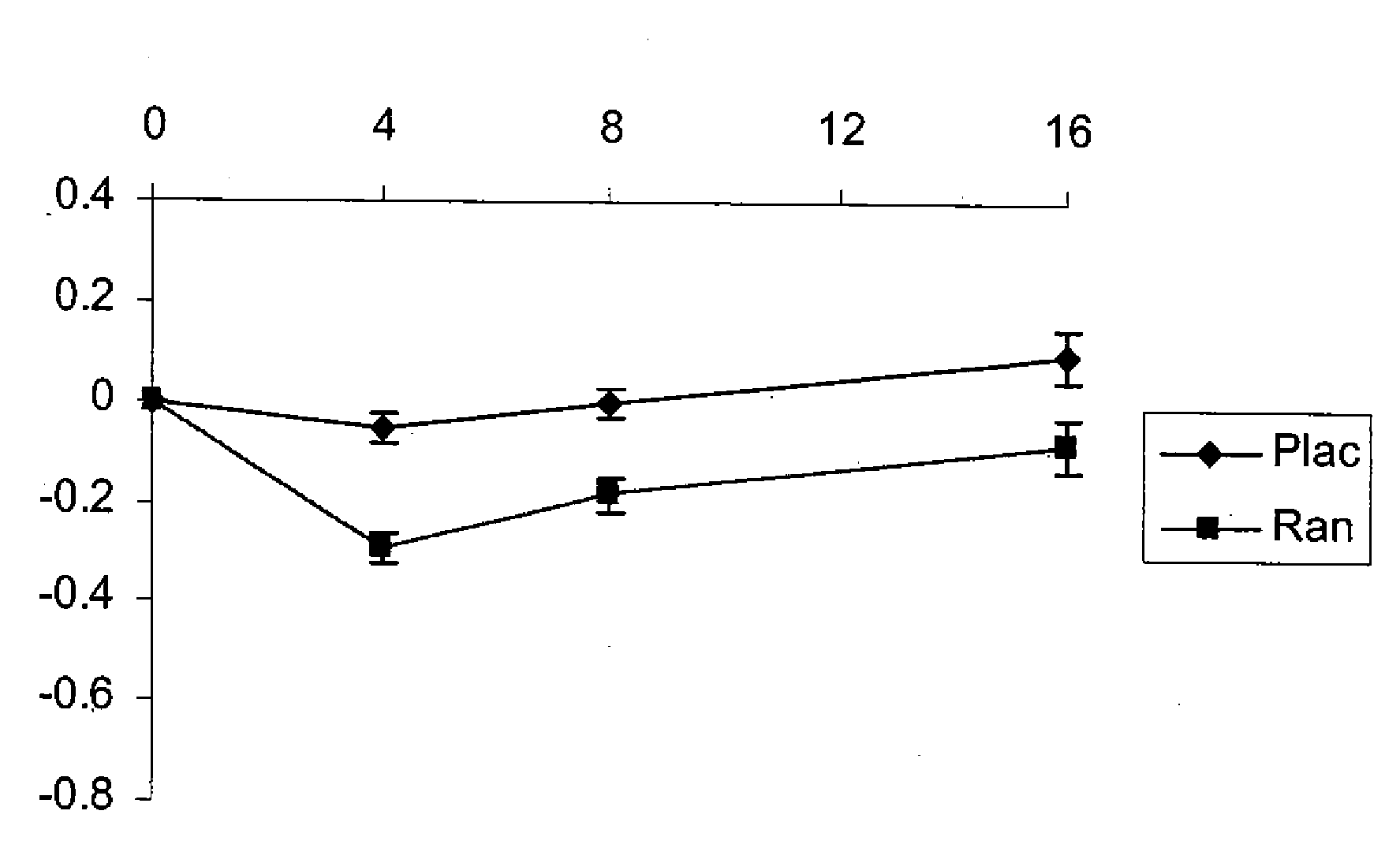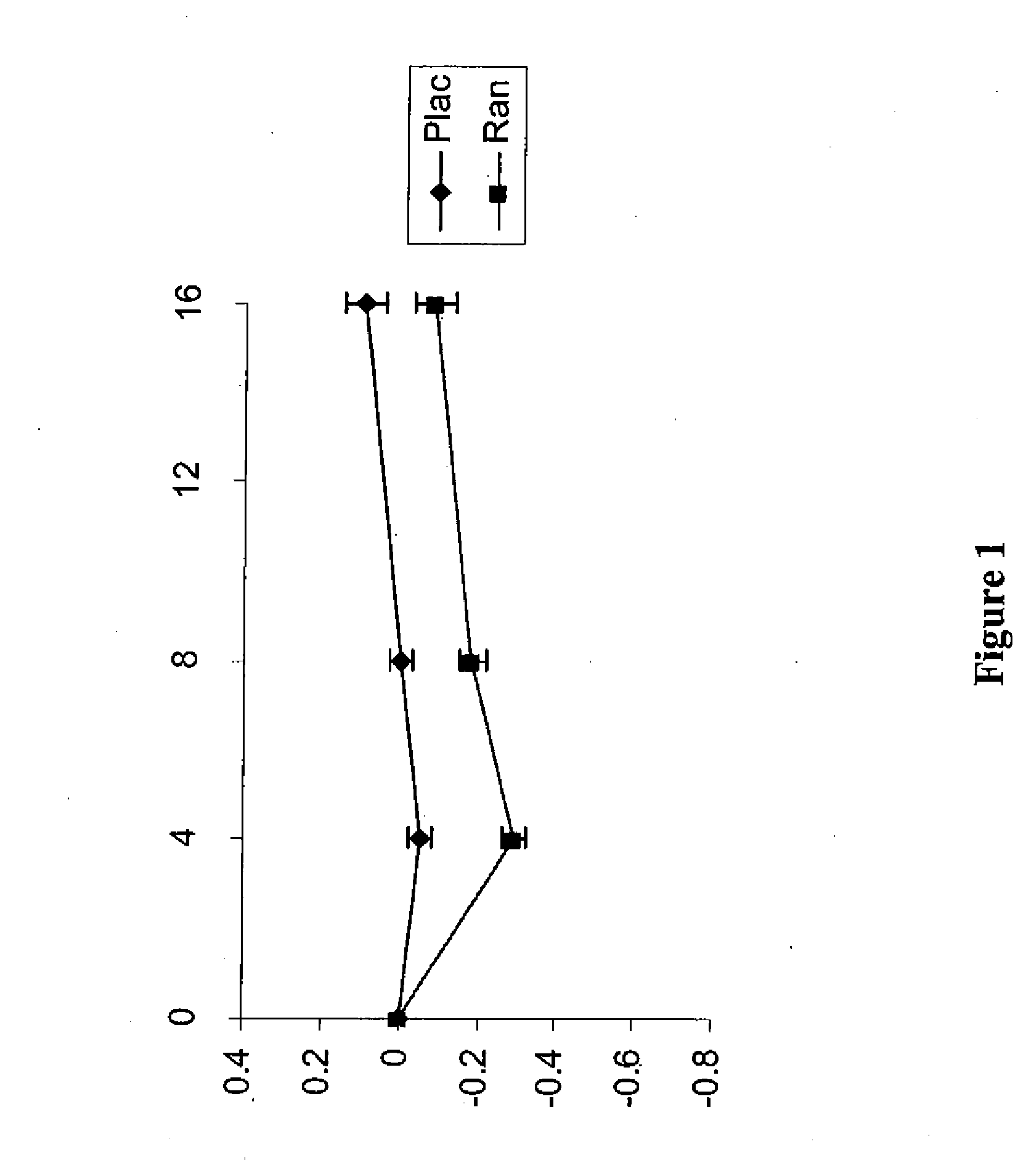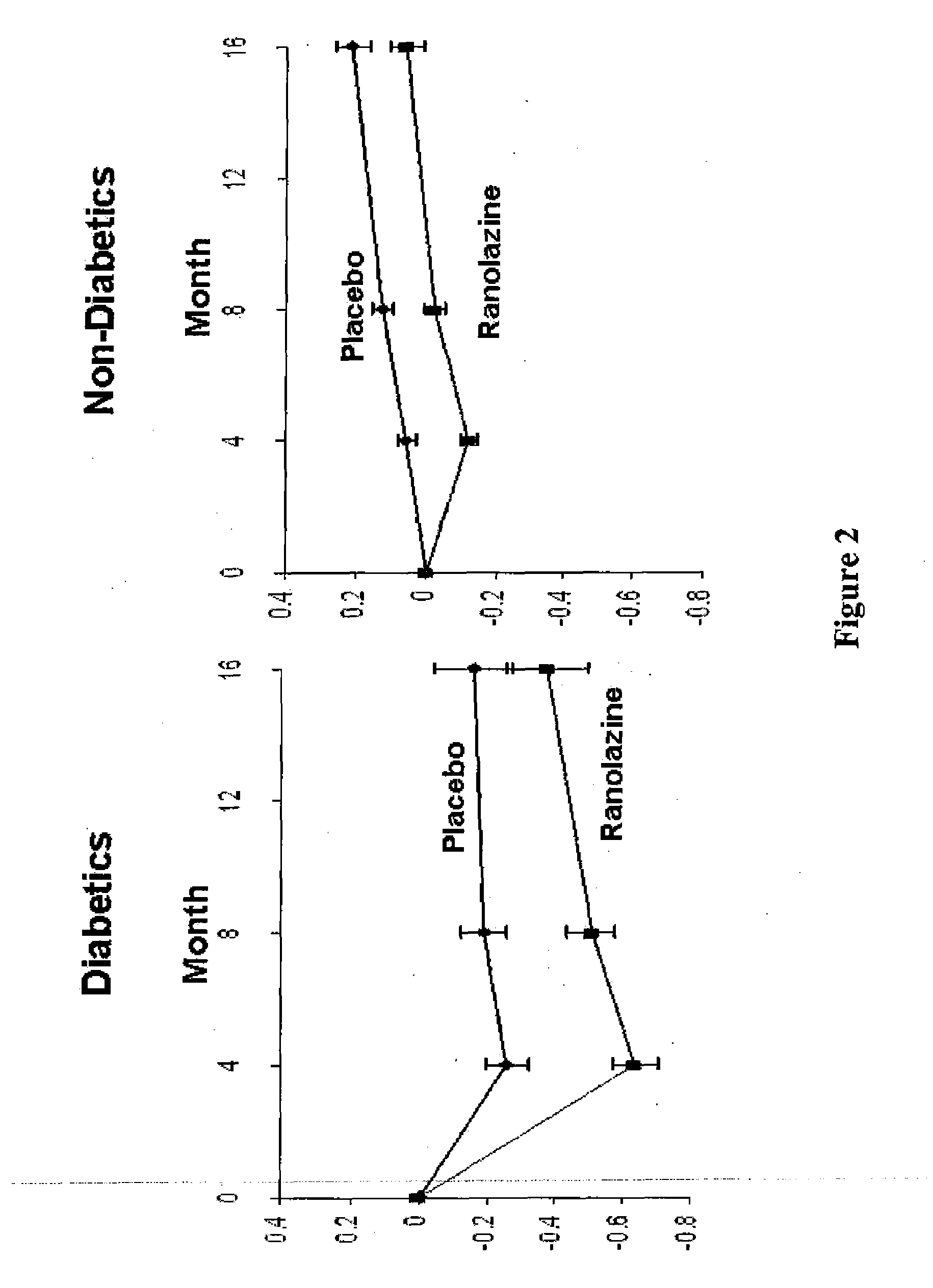Use of ranolazine for the treatment of coronary microvascular diseases
a microvascular disease and ranolazine technology, applied in the field of use of ranolazine for the treatment of coronary microvascular diseases, can solve the problems of increasing the risk of heart failure and heart attack, “non-obstructive” ischemia and injury, and insufficient treatment of microvascular diseases
- Summary
- Abstract
- Description
- Claims
- Application Information
AI Technical Summary
Benefits of technology
Problems solved by technology
Method used
Image
Examples
example 1
Patient Demographics and Selection
[0110]Patients at risk of developing coronary microvascular disease include patients that have high cholesterol, high blood pressure, hyperlipidemia, incipient diabetes, metabolic syndrome, patients who smoke, patients with chemicals present in their blood which may result in damage to the arterial lining of the small arteries, and those patients who have undergone angioplasty procedures after which the patient experiences coronary recanalization.
[0111]Patients exhibiting persistent chest pain (PChP) in the absence of obstructive coronary artery disease (CAD) are particularly likely to be suffering from, or at a risk of suffering from, coronary microvascular disease.
[0112]Based on the above criteria, patients who are at risk from developing coronary microvascular disease can be further analyzed to determine if they are currently suffering from the disease. The presence of microvascular disease can be determined by any means known in the art. For exa...
example 2
Method of Preparing a Sustained Release Tablet
[0115]One sustained release formulation of ranolazine employed in this invention, includes a pH dependent binder and a pH independent binder. This formulation was prepared by combining Ranolazine (7500 g), Eudragit® L 100-55 (1000 g), hydroxypropyl methylcellulose (Methocel® E5-source) (200 g), and microcrystalline cellulose (Avicel®) (1060 g) by intimate mixing. The mixed powders were granulated with a solution of sodium hydroxide (40 g) in water (1900 to 2500 g). The granulate was dried and screened, mixed with magnesium stearate (200 g), and compressed for example into tablets weighing 667 mg to achieve a dose of 500 mg of ranolazine free base per tablet. The tablets were spray coated in a 24 inch Accelacota® cylindrical pan coater with OPADRY film coating solution to a 2-4% weight gain. OPADRY film coating solutions are available in a variety of colors from Colorcon (West Point, Pa.).
[0116]The stepwise procedure for preparing this fo...
example 3
Preparation of IV Ranolazine
[0129]20-mL Type 1 flint vial of Ranolazine Injection filled to deliver 20 mL (at 1, 5, or 25 mg / mL ranolazine concentration).
Compositions:Ranolazine1.0, 5.0, 25.0 mg / mLDextrose monohydrate55.0, 52.0, 36.0 mg / mLHydrochloric acidq.s. pH to 4.0 ± 0.2Sodium hydroxideq.s. pH to 4.0 ± 0.2Water for Injectionq.s.Container / Closure System:Vial:Type 1 Flint, 20-cc, 20-mm finishStopper:Rubber, 20-mm, West 4432 / 50, gray butyl,teflon coatedSeal:Aluminum, 20-mm, flip-top oversea
[0130]Method of Manufacture
[0131]The intravenous formulation of ranolazine is manufactured via an aseptic fill process as follows. In a suitable vessel, the required amount of dextrose monohydrate was dissolved in Water for Injection (WFI) at about 78% of the final batch weight. With continuous stirring, the required amount of ranolazine was added to the dextrose solution. To facilitate the dissolution of ranolazine, the solution pH was adjusted to a target of 3.88-3.92 with an 0.1 N or 1.0 N HC...
PUM
| Property | Measurement | Unit |
|---|---|---|
| weight | aaaaa | aaaaa |
| weight | aaaaa | aaaaa |
| waist circumference | aaaaa | aaaaa |
Abstract
Description
Claims
Application Information
 Login to View More
Login to View More - R&D
- Intellectual Property
- Life Sciences
- Materials
- Tech Scout
- Unparalleled Data Quality
- Higher Quality Content
- 60% Fewer Hallucinations
Browse by: Latest US Patents, China's latest patents, Technical Efficacy Thesaurus, Application Domain, Technology Topic, Popular Technical Reports.
© 2025 PatSnap. All rights reserved.Legal|Privacy policy|Modern Slavery Act Transparency Statement|Sitemap|About US| Contact US: help@patsnap.com



